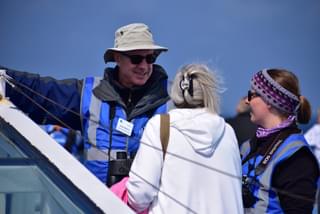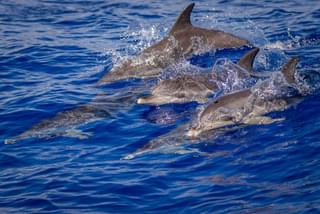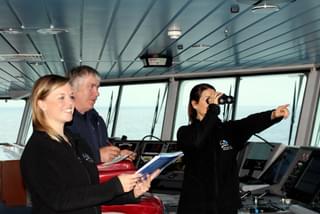Cuvier's beaked whale
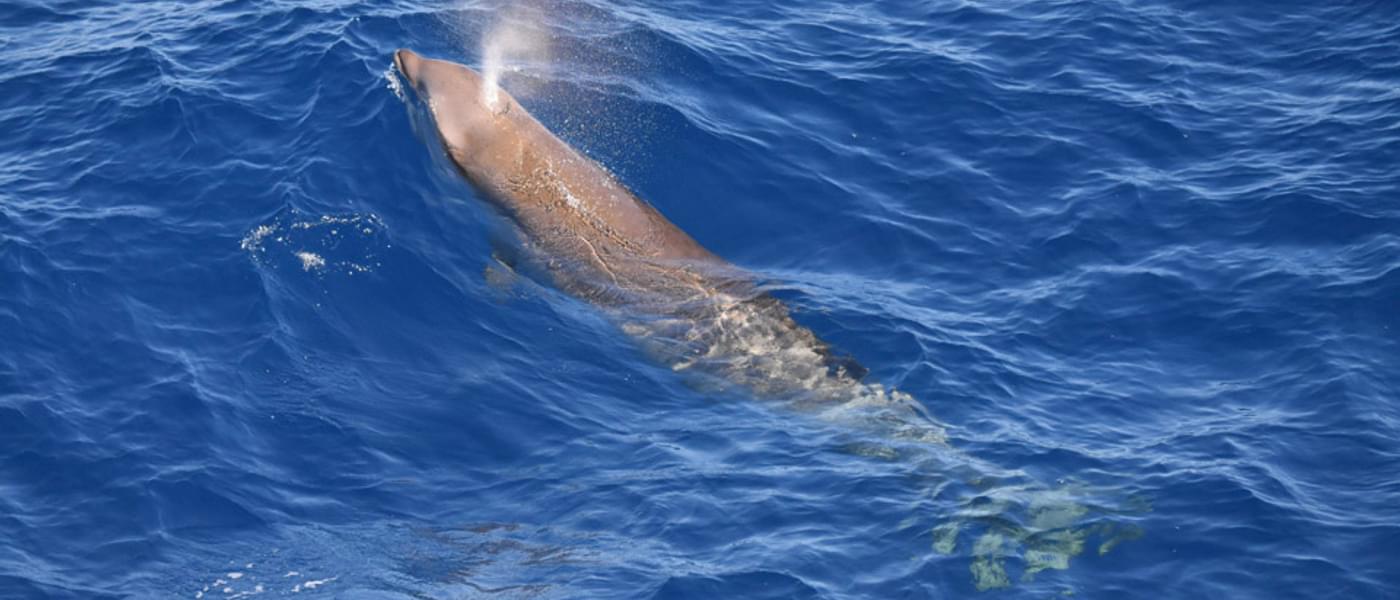
Ziphius cavirostris
5 - 7m
Ranges
Teeth
Dorsal fin
Cuvier’s beaked whales have a high variation of colour, ranging from dark grey, to reddish brown, to almost white; their head is lighter than the rest of their body (cream to white in colour). They have a gently sloping forehead and a short stubby beak. Mature males have two teeth (tusks) protruding from the tip of the lower jaw, females and immature animals so not have these protruding teeth. Males fight each other for territory and females, raking each other with their teeth, creating scars that stay white for the rest of their lives. Cuvier's beaked whales are the deepest and longest-diving marine mammal on Earth.
Key features
- White, 'goose-like' face with a short beak
- Curved dorsal fin, 2/3rds along the back
- Scarring on upper body of males
- Breaching described as torpedo like
Behaviour
Cuvier’s beaked whales travel alone or in groups of 1-12, with lone animals typically being older males. Normally Cuvier’s beaked whales are known to avoid boats, but have been known to be quite inquisitive of the ferries passing through the Bay of Biscay, often seen surfacing slowly quite close to the ship. They are also known to occasionally breach vertically out of the water like a bullet, belly-flopping back into the water. When surfacing, the melon and head appear first, and the whale smoothly rolls through the water with the tailstock slightly arching when they dive.
Threats
As these animals are a deep diving species the largest threat that they face is that of ship sonar, which can confuse these animals as they use noise to locate their food at depth. Recent mass strandings of this species have been linked with military activity. Other threats include: marine pollutants (particularly plastic), entanglement in fishing gear, collision with ships, overfishing of prey species and climate change as this can alter their habitat and the location of food.
Distribution
Strandings of Cuvier’s beaked whales strandings suggest they are a cosmopolitan species in temperate and tropical waters. They are regularly seen in the deep waters of the Bay of Biscay, particularly around the canyons along northern Spain.
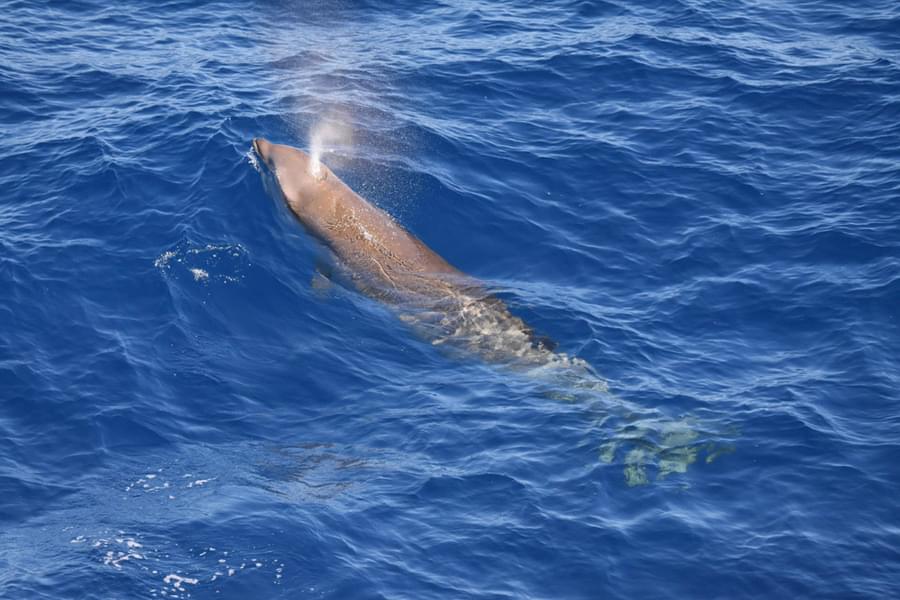
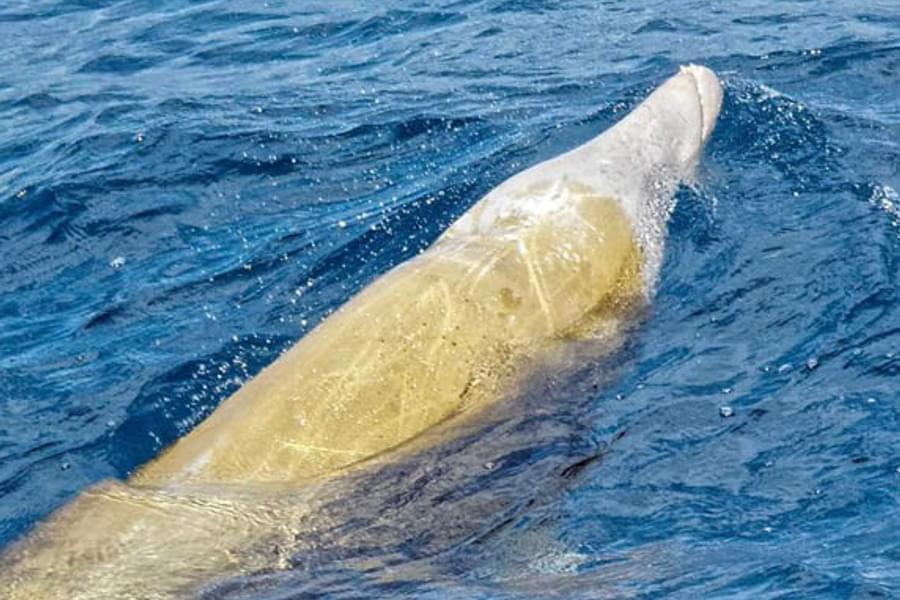
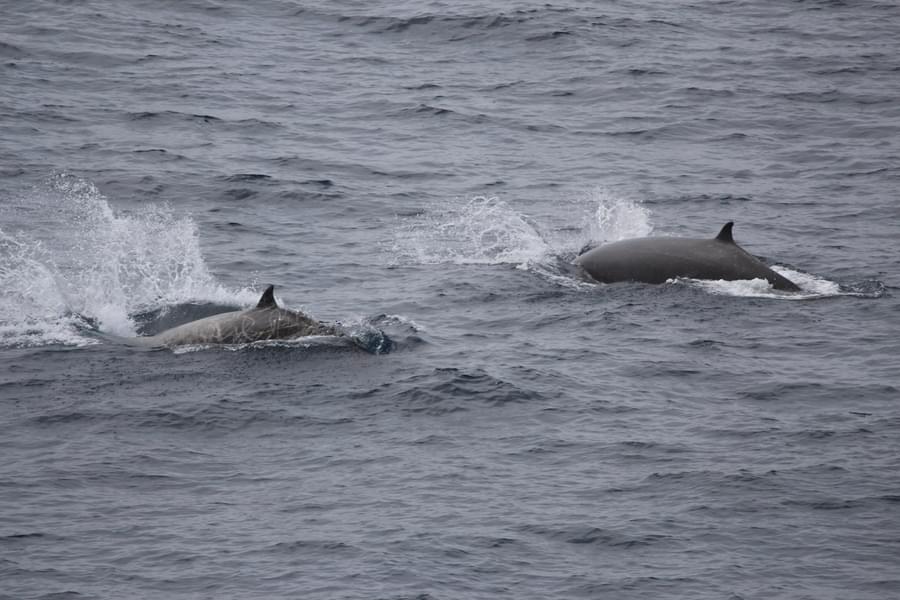
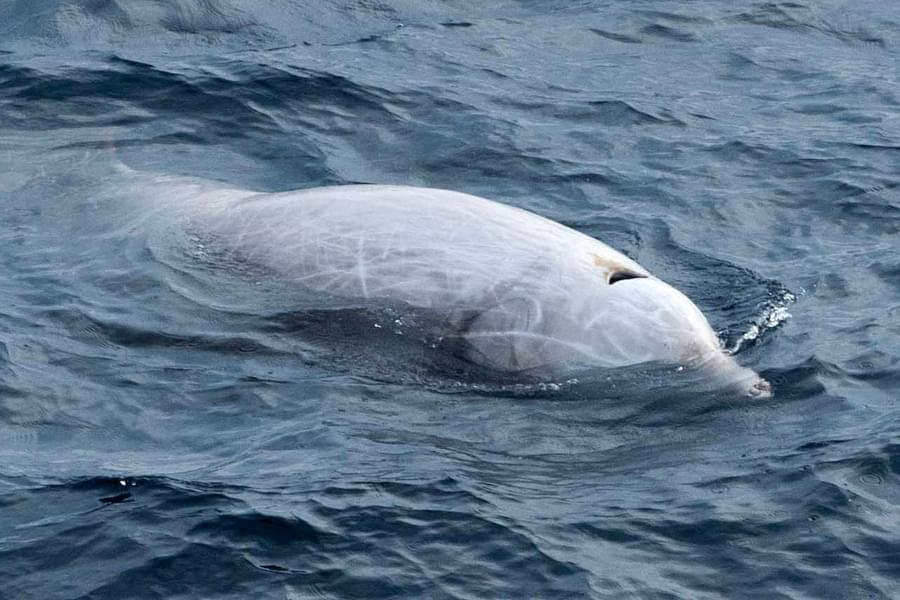
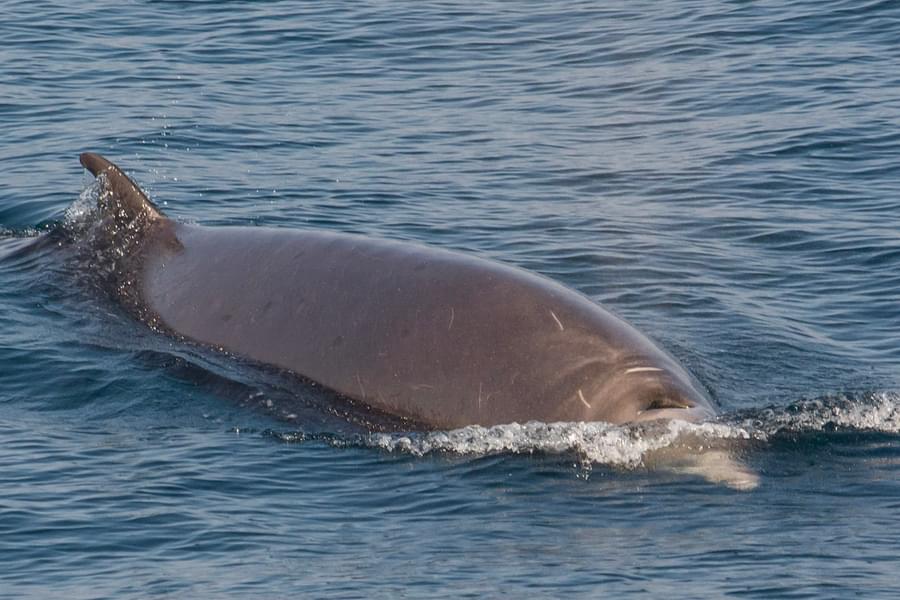
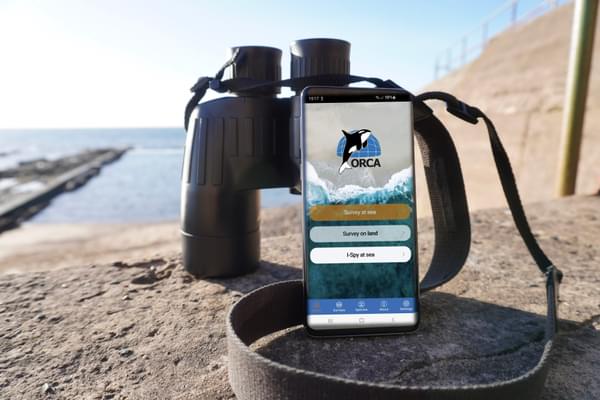
Study whales and dolphins as an ORCA OceanWatcher
The ORCA OceanWatchers online training course, along with a bespoke app, will enable everyone to collect data about whales, dolphins and porpoises. And it can be collected from anywhere that you can see the sea - whether that’s from your local beach, on holiday at the coast, scanning the seas from a cruise ship, travelling via ferry, or from your own boat.
You may also be interested in

